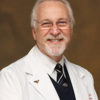| Primary Care for Family Medicine and Internal Medicine: An Evidence-Based Review |
| Mon Jun 14, 2021 - Thu Jun 17, 2021 |
| 7:30am-12:50pm EST |
| The Westin, Sarasota, Florida |
| SEMLA-3520210614 |
|

Live Webinar Access Information:
Webinars are held via zoom and the Wednesday prior to the conference start date, an email will be sent with the zoom link.
Presented By
Presenter
-
Lawrence H. Brent, M.D. (Learn More)

Professor of Medicine, Division of Rheumatology, Department of Medicine, Lewis Katz School of Medicine at Temple University, Philadelphia, PA -
Kevin E. Elder, MD, FAAFP, CAQSM (Learn More)

Associate Clinical Professor, University of South Florida; Assistant Clinical Professor, Florida State University; US Soccer Team Physician U23MNT (Team Physician Coordinator- Olympic Team); US Ski & Snowboard Team Physician -
Kevin S. Ferentz, M.D. (Learn More)

Clinical Associate Professor, Department of Family and Community Medicine; Lead Physician, GBMC Primary Care, Owings Mills, MD -
Lisa R. Ferentz, M.S.W., L.C.S.W.-C., DAPA (Learn More)

Founder and President, The Ferentz Institute; Clinical Social Worker, Private Practice and Clinical Social Work Consultant, Baltimore, MD
Course Outline
Day 1
Routine Adult Care. (Ferentz, K)
Upon completion of this session, the participant should be able to: EBM, GL, COMP
- Determine which screening tests are indicated for particular patients, according to USPSTF guidelines.
- Employ Guideline recommendations presented for common disorders such as HBP, Lipids, STD’s, Cancers-lung, Cx, Breast, etc; AAA, Hep B & C; T2DM, etc., .
- Advise your patients regarding vitamins and supplements as per the USPSTF and Evidence.
- Order appropriate immunizations for adult patients as per the ACIP and CDC Schedules.
Smoking Cessation. (Ferentz, K)
Upon completion of this session, the participant should be able to: EBM, GL, COMP
- Recognize the role of smoking in disease etiology and the Health Consequences as identified in the 2014 Surgeon General and CDC Report.
- Develop methods of how to recognize influence and build confidence in a patients’ ability to quit smoking as per the AHCPR Guidelines.
- Utilize techniques and develop resources to enhance a patients’ ability to stop smoking, such as the NCI and smokefree.gov.
- Recognize the various benefits or advantages, indications and contraindications for use of the various available drugs and devices to assisting your patient in smoking cessation.
Food for Thought: Understanding and Working with Eating Disorders. (Ferentz, L)
Upon completion of this session, the participant should be able to: COMP ^
- Identify the behavioral and psychosocial triggers that promote eating disordered behaviors.
- Distinguish between the symptoms of anorexia, bulimia and binge eating behaviors.
- Recognize the clinical “red flags” that indicate eating disordered behavior.
- Apply appropriate interventions designed to treat eating disordered behaviors.
Obesity. (Ferentz, K)
Upon completion of this session, the participant should be able to: EBM, GL, COMP
- State the epidemiology of obesity in America and the health risks associated with obesity.
- Assess patients who are obese and determine that they are in need of treatment.
- Recommend and utilize the ACC/AHA/TOS Guidelines for the Management of Overweight and Obese Adults with options available, including diet, exercise, medications, and bariatric surgery.
- Employ the Endocrinology Society Guidelines on Pharmacological Management of Obesity.
Anemia. (Ferentz, K)
Upon completion of this session, the participant should be able to: GL, COMP
- Develop a diagnostic strategy to ascertain the etiology of the anemia.
- Utilize the guidelines for diagnosing anemia in children and adults in terms of available testing.
- Develop a clinical approach to treating various anemias to include Iron Deficiency and “Anemia of Chronic Disease” due to infections, inflammatory dz’s, CKD, Malignancies, Cytokines, Interferons, TNF’s, etc.
- Describe the role of consultants in the evaluation and management of anemia.
Day 2
Depression and Anxiety in Primary Care. (Ferentz, K)
Upon completion of this session, the participant should be able to: COMP, GL
- Explain the incidence and prevalence of anxiety and depression.
- Evaluate patients with signs and symptoms of anxiety and depression so as to make an accurate diagnosis as per the APA and DSM-5 Criteria.
- Prescribe appropriate medications and/or behavior modification to treat the various degrees of anxiety and depression as well as bipolar disorder from initiation to continuation and maintenance, when needed
- Identify the suicidal patient and take appropriate actions for their safety as well as the public.
Headache. (Ferentz, K)
Upon completion of this session, the participant should be able to: GL, COMP
- Employ the diagnostic criteria for the common types of headaches seen in primary care as per the HA Classification Subcommittee of the International Headache Society and NHF.
- Be aware of “red flag” symptoms indicating the possibility of a more serious reason for the headache.
- Determine when diagnostic imaging is indicated in patients presenting with headache.
- Select appropriate treatment modalities for patients presenting with headache.
Identification and Treatment of Traumatized Patients. (Ferentz, L)
Upon completion of this session, the participant should be able to: COMP ^
- Describe the characteristics associated with traumatic events.
- Interpret the “red flags” or symptomatic manifestations of trauma in patients.
- Demonstrate how to obtain a trauma history from a patient during the H and P.
- Identify and propose interventions designed to treat symptoms of trauma and increase comfort during physical exam.
Improving Compliance. (Ferentz, K)
Upon completion of this session, the participant should be able to: COMP ^
- Use techniques that can better detect non-compliance in their patients.
- Apply techniques that can be used to increase compliance in their patients.
Thyroid Disease. (Ferentz, K)
Upon completion of this session, the participant should be able to: EBM, GL, COMP
- Formulate a plan for the evaluation of a patient with presumed thyroid disease.
- Interpret common lab and imaging tests in the evaluation of a patient with thyroid disease.
- Select appropriate treatment modalities, both medical and surgical, for patients with thyroid disease according to the American Thyroid Association Guidelines.
Day 3
Platelet Rich Plasma/Stem Cell Treatments: Office Options for the Primary Care Practitioner (Elder)
Upon completion of this session, the participant should be able to: COMP
- Discuss current concepts in Orthobiologics/ cellular therapy.
- Define options clearly and state current use and data.
- Provide examples of office-based products/options.
Platelet Rich Plasma/ Regenerative Medicine: Options for Tendonitis and DJD (Elder)
Upon completion of this session, the participant should be able to: COMP
- Define what PRP is and its role in treating musculoskeletal conditions.
- Describe the mechanism of action of PRP in healing injuries
- Define common uses of PRP.
Secret to Low Back Pain (Elder)
Upon completion of this session, the participant should be able to: COMP
- Define back pain and its common presentation.
- Explore key to unlocking back pain through history, exam, and imaging.
- Discuss treatment options: “The good, the bad, and the ugly.”
Rheumatoid Arthritis. (Brent)
Upon completion of this session, the participant should be able to: GL, COMP
- Demonstrate the role of genetics, environmental factors, immune cells, and proinflammatory cytokines in the pathogenesis of rheumatoid arthritis.
- Illustrate the clinical features, extra-articular manifestations, and complications of rheumatoid arthritis.
- Utilize and compare various methods of measuring disease activity in rheumatoid arthritis.
- Compare and contrast the mechanisms of action of current and emerging therapies for RA and prescribe treatment for patients with rheumatoid arthritis according to ACR guidelines.
Crystal Arthritis. (Brent)
Upon completion of this session, the participant should be able to:
- Describe the main clinical features associated with Crystal Arthritis
- Gain insight into the pathophysiology of Crystal Arthritis
- Discuss treatment modalities for Crystal Arthritis
Day 4
Concussion Update for the Primary Care Practitioner (Elder)
Upon completion of this session, the participant should be able to: GL, COMP
- Discuss concussion incidence and definition.
- Review current concussion management including specific components/tools.
- Review concussion pathophysiology and prevention.
- Discuss future directions of concussion research.
Medical Management of the Athlete/Athletic Patient: Case Studies and Review. (Elder)
Upon completion of this session, the participant should be able to: COMP
- Define the role of Team physician, and others on the medical team in a sports medicine environment including Advanced Care Practitioners.
- Discuss logistics of medical evaluations
- Review the medical care of athletes using case presentations including specific examples.
- Summarize the medical care of the athlete and components of a successful medical team approach.
Supplements/Vitamins and Performance Issues. (Elder)
Upon completion of this session, the participant should be able to: EBM, COMP
- Discuss current recommendations regarding carbohydrates, protein, fat intake.
- Discuss common mineral and vitamin recommendations and the evidence behind these recommendations.
- Define emerging areas in sports performance.
Systemic Lupus Erythematosus. (Brent)
Upon completion of this session, the participant should be able to: GL, EBM, COMP
- Describe the varied clinical presentations and manifestations in the course of systemic lupus erythematosus.
- Order and interpret laboratory testing used in the diagnosis of systemic lupus erythematosus in accordance with ACR Guidelines.
- Monitor and employ treatment options for patients with systemic lupus erythematosus according to EULAR recommendations and evidence-based results from clinical studies.
Scleroderma and Raynaud’s Disease. (Brent)
Upon completion of this session, the participant should be able to: GL, COMP
- Specify the clinical manifestations of scleroderma.
- Apply the ACR/EULAR classification criteria for systemic sclerosis.
- Utilize treatment available for symptomatic manifestations as per the current EULAR recommendations.
- Apply the diagnostic work-up and treatment of Raynaud’s Phenomenon.
Accreditation
This program is not yet approved for CME credit.




